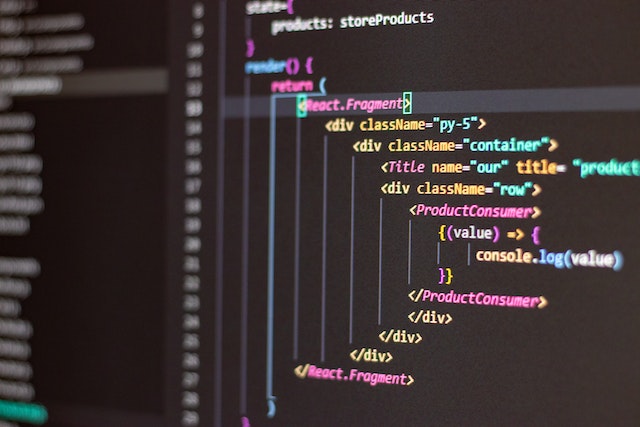Building a high-quality product is the main goal behind any software development project. The entrepreneur needs to find a unique and valuable idea, define the best ways to bring this idea to life, and successfully launch the final product in the market. But, nobody is saved from mistakes. Even if you are applying to reliable software product development services, still there is no 100% guarantee that you won’t face any challenges on your way to developing your project.

If you are searching for ways to avoid the most widespread software development challenges, this article is for you.
Top 10 Software Development Challenges and How to Overcome Them
So, you want to blow the software industry with your new startup. But what can go wrong?
Let’s take a look at the most common challenges that you may face while developing a software product.
Challenge #1. Unclear requirements
Requirements are a guide for your team on how to create your product. It doesn’t matter whether you want to resort to a product development service or delegate the project to your onboard team, the requirements should be clear for everyone working on your project. Around 35% of startups fail because the development team doesn’t know exactly what to do. The absence of clear requirements leads to misunderstanding between team members and stakeholders and managers, prolongs time to market, and increases the risk of getting a product that you won’t like.
Solution: Create an SRS (Software Requirements Specification) document that will contain detailed information about the requirements of your future product. You can use an international standard (IEEE/ISO/IEC 29148) according to which an SRS document should consist of three parts: product overview (introduction, main goals, etc.), requirements (scope of work, functional and non-functional requirements, etc.), and an appendix (references, glossary, etc.).
Challenge #2. Non-established idea & project vision
Your software product idea and vision should be clear for everyone involved in the project (development team, stakeholders, investors, etc.). You shouldn’t treat the members of your development team like people who just have to complete tasks. They are directly interested in the success of the end result. That is why your team members should know exactly what kind of software you want to create, what problem this software will solve, etc. Thus, they will work more effectively by being able to provide feedback and give you new ideas on how to improve the development process.
Solution: Don’t launch the development process unless you have formed your vision and idea clearly. You can work on your idea during the discovery phase of a software development life cycle (SDLC).
Challenge #3. Improper choice of a software development methodology
Before launching the development process, you need to choose the methodology according to which you will organize the development process. There are many options to choose from: Agile, DevOps, Scrum, Waterfall, and others. The choice of an unsuitable technology may put your whole project at high risk and make the software product management process more difficult. Founders tend to choose the newer, trendy technologies that promise to shorten the development time as much as possible, but this is a completely wrong way to go.
Solution: The choice of a proper methodology should be based on your experience and the product’s requirements. If you are creating your first product and there will probably be a lot of fixes throughout the process, it’s better to choose Agile methodology. But, if you have enough experience in product development and are sure of the success of the end result, you can go for a Waterfall methodology.
Challenge #4. Lack of required expertise within a team
You may already have a development team before you decide to launch a new project. However, the question is if the members of your team can cope with all the technologies required to implement a new product? The desire to save money using the available resources may become a reason for numerous problems as you will have to delegate to your team members the tasks they just can’t cope with.
Solution: There are three options when you need to fill the gap in expertise within your team:
freelance (hire a freelancer that will complete the required tasks) outsource (outsourcing your whole project or a part of it to a software product development company), and staff augmentation (resort to IT staff augmentation service if you want to recruit the necessary specialist (or specialists) that will work for you for as long as you need)
Challenge #5. Keeping up with new technologies
New technologies keep on appearing while the existing ones evolve faster and faster. What does this mean for you as a startup owner? This means that you need to constantly adapt your software to new requirements. Until new versions of operating systems and new gadgets appear, you will have to adapt your product to them. However, many founders think that updating software means adding new features. Of course, you have to do this to meet the upcoming needs of your users, but it’s also important to make sure that your software functions perfectly on any device and ensures a sleek user experience.
Solution: Keep track of new versions of frameworks, libraries, and other technologies. Improve the backend and architecture of your software and the way it functions to make sure that each new version of your software is compliant with the latest requirements.
Challenge #6. Testing
Quality assurance is a vital part of any software development process. However, sometimes, founders perform the testing process the wrong way or invest too little time into it. Somebody may say that this allows for saving more time and money, meeting tight deadlines, and launch the product faster. But bugs and errors in code may actually lead you to failure as you will just present a poor-quality product that no one will want to use.

Solution: There are two major types of QA testing: manual and automation testing. Manual testing is performed by a human (QA engineer). Automation testing is done by a special program. Both of these types of testing have their pros and cons, but it’s recommended not to choose between them but apply both types of testing. Moreover, you shouldn’t only test the final product: the testing should be performed by developers during the whole process of development.
Challenge #7. Lack of feedback
Your software product needs to be valuable for users. When you first present your product on the market, the most important thing you can get from that is feedback. If you don’t know what problems the users are facing when using your software, you won’t be able to fix them. And, of course, you will never know what features you should add in the next versions of your product. This all leads to a dead end when you don’t know which way to go with your project next.
Solution: Start your project with MVP (Minimum Viable Product) development. The main purpose of an MVP creation is feedback that you can collect from the first users. Moreover, you shouldn’t forget about using monitoring tools to follow important metrics.
Challenge #8. Lack of documentation
What do you need to start a development process? A product management plan, you may answer. However, if you want to succeed with your product, you need much more than just a plan. Lack of the necessary documentation may lead to missed deadlines, waste of resources, and getting a product that no one needs (42% of startups fail because there is no real demand for them on the market).
Solution: The more documents you have in your hands before the development process starts the better. The list of basic documents may include an SRS document, development cost and time estimation, development plan, risk assessment and mitigation plan, roadmap, etc. Start your project with a discovery phase; this will allow you to get as many documents necessary for the development process as possible, avoid risks and ensure the success of your future product.
Challenge #9. Not investing enough resources into market research
You have a great, innovative idea that nobody has implemented before you. What can go wrong? Well, the question is if there is a demand for your product in the current market?
The development of any software product should start with market research. However, some founders prefer skipping this stage or investing minimal resources into it with the intention to save time and money. This results in the creation of a product that nobody wants and a waste of resources that could be used properly if the market research was done better.
Solution: Focus on the needs of your target audience; don’t try to create a product that, as you think, everybody will love. Thus, you are risking creating software that is so general that it doesn’t actually solve anybody’s problem. For this, start the development process with market research. This will help you understand your target audience’s needs better and discover valuable insights.
Challenge #10. Selecting the wrong tech stack
The proper choice of a tech stack for a software product is one of the most important points to ensure the success of the end result. Many founders get tempted by new, trendy technology as they want their software startup to be made in accordance with the latest trends. However, if the technology is new and trendy, this doesn’t mean it suits your project and can fulfill its requirements.
Solution: You should consider your resources and the specialists present in your team when choosing a tech stack for a project. If you have the opportunity to extend your team or outsource the project to any of the software product development companies, your choice, of course, will be wider. But, if you want to launch the development process relying solely on your internal team, choose technologies according to the skills of your onboard developers.
Software Product Development Challenges: Lessons Learned
In this article, I have listed 10 most common challenges that a startupper may face during the product development process. So, to conclude, let’s highlight the key points:
- You need an SRS document to provide your team and stakeholders with clear project requirements.
- It’s necessary to shape your idea and product vision clearly before launching the development process.
- It’s vital to choose the software development methodology correctly.
- You need to make sure that you have all the necessary specialists in your team before starting a new project.
- You need to build your product in accordance with the latest requirements.
- It’s recommended to perform both manual and automated testing.
- Each new version of your software should be based on users’ feedback.
- You should have the necessary documentation in your hands before you start the development process.
- Start the project with market research to avoid risks.
- Select the tech stack in accordance with your opportunities and the needs of your project.







Add Comment